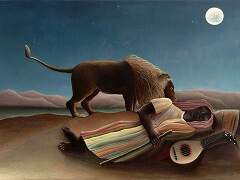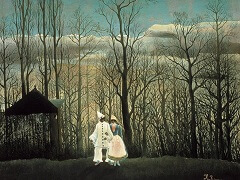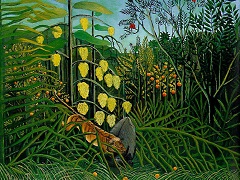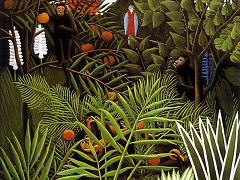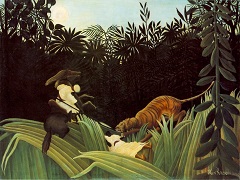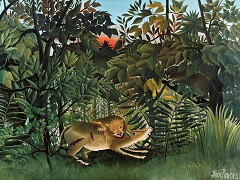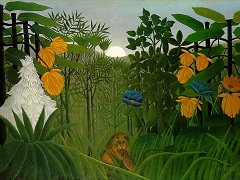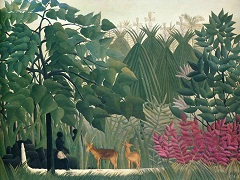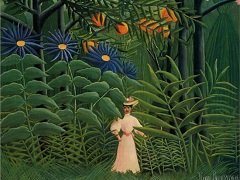Boy on the Rocks, 1895 by Henri Rousseau
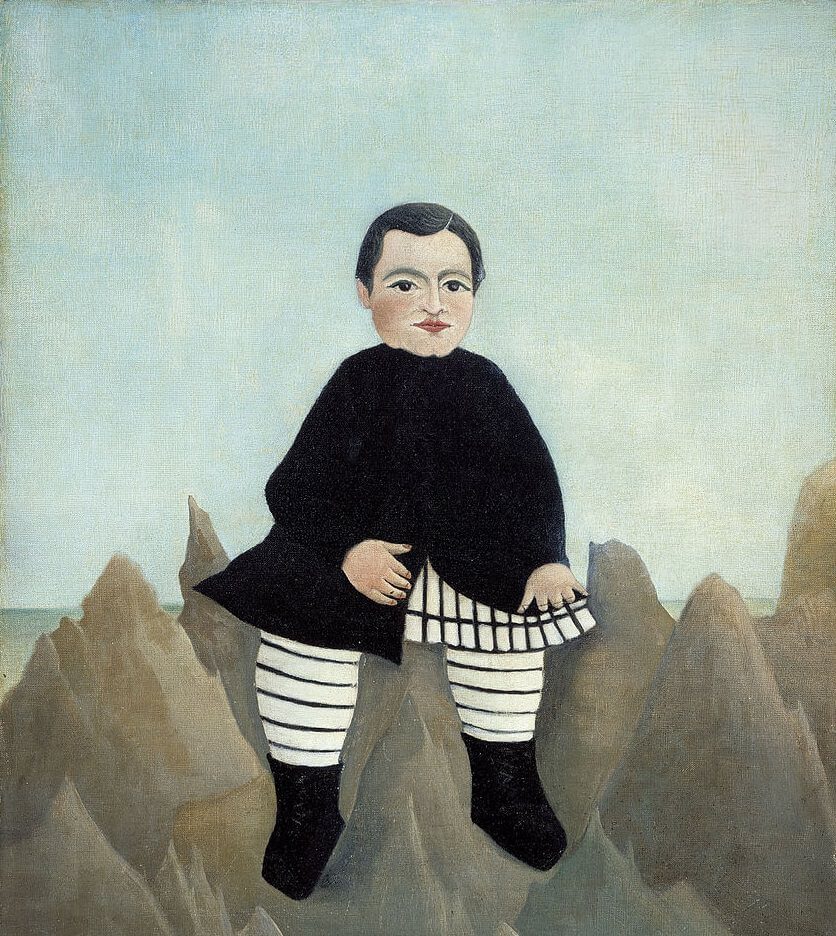
Boy on the Rocks was created anywhere from 1895-1897 by Henri Rousseau. The boy in the painting is the only one present in the entire area. He is sitting on top of jagged looking rocks that are piled all around him. Behind the boy is a light blue sky that does not appear to have any clouds in it. The boy is wearing a black cloak and black boots. He is also wearing black and white striped pants and a matching shirt, which could very well be pajamas. His expression is slightly smiling, but his lips are fully closed. The boy's cheeks are also rosy and red, which makes his face look flush against the pale background.
Boy on the Rocks is naïve because it ignores the laws of perspective, lacking that narrowing to vanishing points that everyone has observed in railroad tracks and paintings of Old Master like Leonardo da Vinci, El Greco, Francisco Goya, and Caravaggio. The boy in the painting is the same size as the mountainous rocks, and it is impossible to tell where he stands in relation to them. It looks as if he has been photoshopped in, with one dab of shadow added to humor observers.
The colors in the painting do not dull with distance. The sky hangs in a flat curtain immediately behind the boy. The ocean is a wall with a blue line for a rim, firm where it marks off the sky, smudged below.
The painting now is on display in Washington, DC at the National Gallery of Art.

